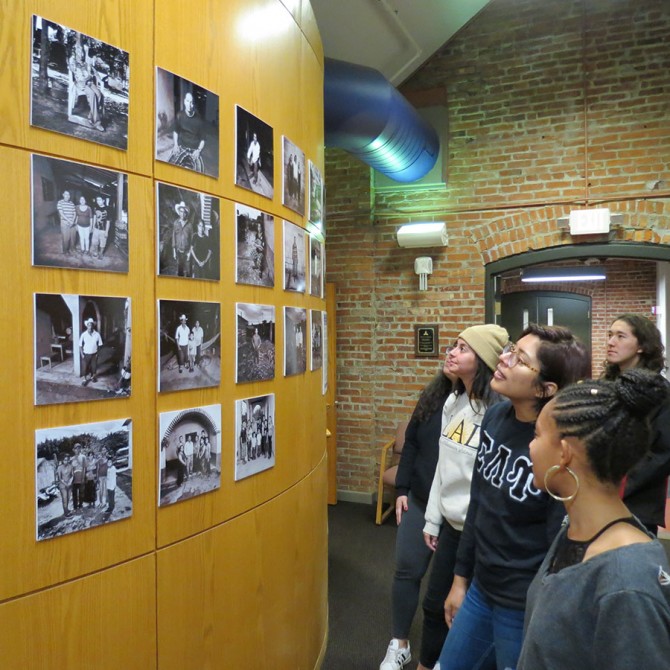Creators of exhibit on Guatemalan refugees speak Nov. 9
By Kathy Hovis
Óscar Gil-García, assistant professor of human development at Binghamton University, and his brother, Manuel Gil, a professional photographer, will share the story of their exhibit, “From Stateless to Citizen: Indigenous Guatemalan Refugees in Mexico,” during a Nov. 9 lunch in the Latina/o Studies Center on the fourth floor of Rockefeller Hall. The event is free and open to the public.
The exhibit includes photographs and stories of residents of La Gloria, a Guatemalan refugee community of 3,800 people in Chiapas, Mexico, that Gil-García has been working with since 2004.
“‘From Stateless to Citizen’ reflects the history and ongoing reality of indigenous people who were displaced by U.S.- and state-backed civil wars throughout Central America and who have been living outside of their homelands for decades,” said Ella Diaz, associate professor of Latina/o Studies and English. “This is especially important for people to understand given the recent news that consistently treats the problem as a 21-st century phenomenon when, in reality, the displacement of people, and first peoples in particular, has never ended in the Western hemisphere.”
Diaz learned about Gil’s work in 2017, when she was teaching a course on “testimonio” literature at the San Francisco Art Institute, where Gil was her student.
“Testimonio is a genre of literature in Latin American, Indigenous and Chicanx literary traditions that foregrounds collective experience and not the individual voice; it relies on mediation and the witnessing of personal stories of traumatic experiences in relation to larger contexts of war, discrimination and systems of power that impact individual lives,” Diaz said.
Gil-García, an anthropologist and sociologist, has been instrumental in collaborating with community leaders and Julia Torres, a local attorney, to help members of the La Gloria community gain legal status.
“I was interested in displacement in this region, but had never heard of this community before,” he said. “At first, I was really just trying to document how indigenous Mayans who faced displacement from Guatemala rebuild communities in Mexico and the U.S.” for his dissertation. As Gil-Garcíalearned more about their struggles to achieve legal status in Mexico he met with Torres to file a grievance to the Mexican government regarding the prolonged delay in processing naturalization claims. They also collaborated with a videographer to capture the residents’ stories.
Although all of the people in Gil’s photographs have now received legal status, there are still 27,000 Guatemalan refugees without legal status in Mexico, he said.
Gil-García’s academic focus on migration and displacement has a personal backstory. As a child, he witnessed an immigration raid in his Brooklyn, New York, home that resulted in the deportation of his uncles.
“I didn’t initially want to focus on immigration because of that trauma in my own life,” he said. Today, he finds it motivational.
“There are so many immigrants like my parents who are working hard to make ends meet for their children so that they too can contribute to this county,” he said. “I have a unique opportunity as an academic to bring that lens in because I have first-hand experience into what immigration enforcement looks like.”
Kathy Hovis is a staff writer for the College of Arts and Sciences.
Media Contact
Get Cornell news delivered right to your inbox.
Subscribe
